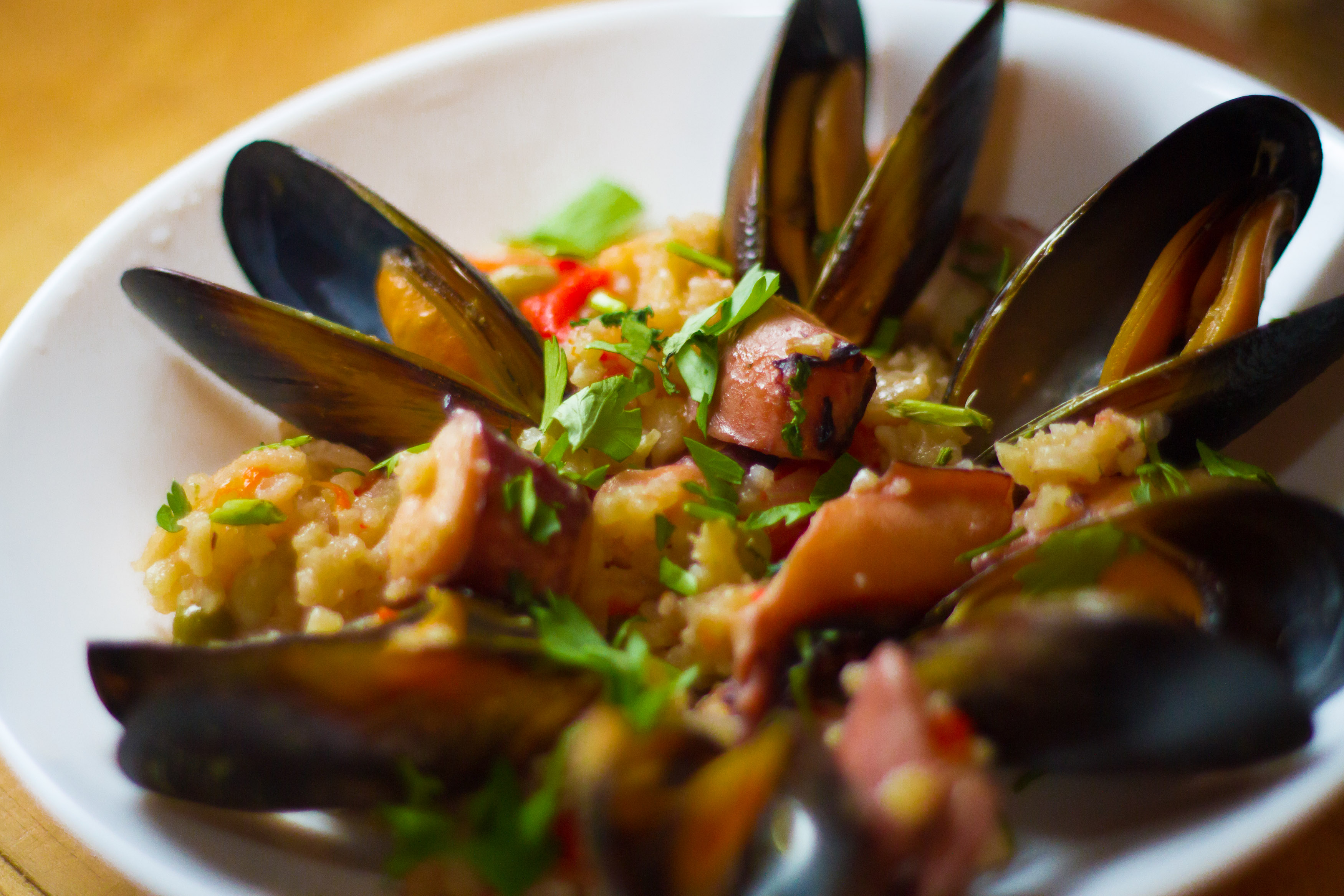South Korea has staggeringly low obesity rates – just 6%, compared to 25% of obese Brits. With seafood being a major part of the South Korean diet, Jamie paid a visit to the famous Haenyeo ‘diving ladies’ of Jeju island, who free-dive impressive depths to catch their seafood bounty by hand.
WHAT IS SEAFOOD?

There are so many fantastic flavours to discover under the sea, from squid and shrimp to large flat fish, or smaller flavour-packed anchovies. ‘Seafood’ simply refers to any edible animal that lives in the sea (which includes fish and shellfish), so that covers everything from squid to shrimp, oysters to mackerel and octopus or clams.
IS SEAFOOD GOOD FOR YOU?
Yes! In general, seafood is a great, lean source of protein, which we need to build muscle and bones. Many fish, such as salmon and mackerel, are a source of polyunsaturated fatty acids, which keep our blood cholesterol levels healthy, protecting us from heart disease.
Salmon is super-high in vitamin D, while many white fish, such as haddock, are high in selenium (great for hair and nails) and iodine, which is good for producing metabolic hormones. Many shellfish are a source of micronutrients including zinc (good for skin and hair), copper (helps cell reproduction), chloride (a digestion aid) and iron (for healthy red blood cells).
BUYING SEAFOOD
Before you hit the shops, it’s good to know about Jamie’s two golden rules when it comes to buying seafood. The first, is to make sure you get to know your fishmonger. A good fishmonger will be able to advise you on what’s in season, what’s local what’s farmed and what’s sustainable – they’ll make your seafood shopping a whole lot easier. The second rule is that, generally speaking, fish is best eaten on the day you buy it (unless you’re curing it). This does require a bit of planning, but trust us, it’s so worth it to enjoy your seafood at its very best.
HOW TO PREPARE SEAFOOD
If you’re cooking with shellfish such as mussels, clams or oysters, you should only cook the ones that are tightly shut. Give any open ones a tap, and if they don’t close, chuck those ones away – opened shells usually mean they are old, or dead, and not safe to eat. Similarly, once cooked, any shells that remain closed should also be discarded. Here’s how to shuck an oyster.With a little know-how, it’s pretty easy to prep fresh shell-on prawns – check out Pete from Jamie’s food team showing how to butterfly them ready to cook. He’s also got prepping lobster and crab covered for you.
Source: tps://www.jamieoliver.com/news-and-features/features/how-to-cook-seafood/
This is news from Safimex Joint Stock Company
If you have demand. Please contact us anytime via email or skype, quantity as well as all questions you need.
Iris (Ms.)
Export Executive
Mail: Sales4(at)safimex.com
Gmail:Iris.safimex06708(at)gmail.com
Skype: Iris.Safimex06708
HP/Viber/WhatsApp: (+84) 985867630
—————————————————————————–
SAFIMEX JOINT STOCK COMPANY
Head office: 216/20A Duong Ba Trac street, Ward 2, Distric 8, HCM City
Tell: 8428 36362388
Fax: 8428 36362399
